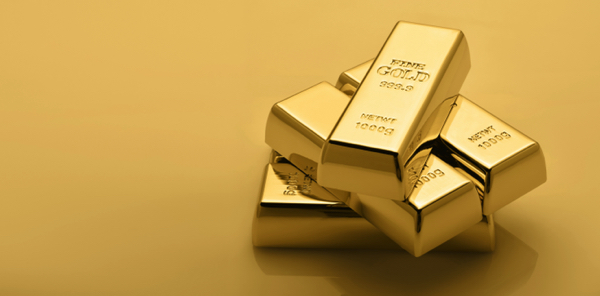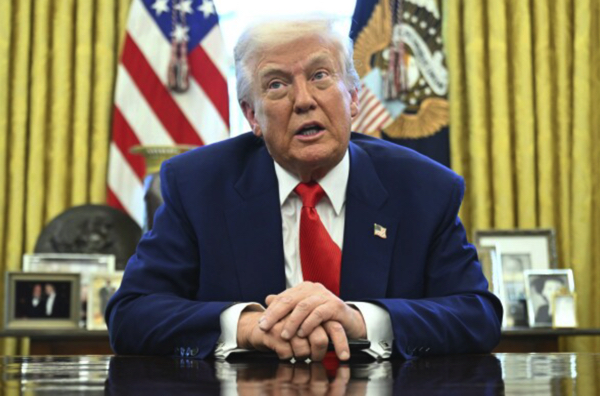Gold surges past $3,400 as economic uncertainty fuels historic safe-haven rush
By isabelle // 2025-04-21
Tweet
Share
Copy

- Gold hits a record $3,400 per ounce, surging 27% since January.
- Investors flock to gold amid dollar collapse, Fed instability, and trade tensions.
- Political and monetary policy failures fuel gold's rise as a safe haven.
- Central banks and individuals turn to gold amid eroding confidence in fiat currencies.
- Experts warn gold's rally reflects deep economic fractures and policy mismanagement.
Economic reality catches up with policy failures
Gold's meteoric climb, gaining over $700 this year alone, reflects a market correcting for the consequences of reckless spending, unchecked inflation, and political interference in monetary policy. The metal surpassed $3,300 just last week before racing past $3,400 as President Trump's public clash with Fed Chair Jerome Powell sent the dollar tumbling to a three-year low. "Firing Powell not only undermines the principle of central bank independence but risks politicizing U.S. monetary policy in a way that markets will find unsettling," said Christopher Wong, strategist at Oversea-Chinese Banking Corp. The Fed’s eroded credibility has accelerated a flight from the dollar, with gold emerging as the ultimate arbiter of economic truth. The Biden administration’s legacy of runaway deficits and anti-growth regulations laid the groundwork for today’s turmoil. While Trump’s criticism of Powell’s slow response to inflation now appears justified, the damage was already done: years of near-zero interest rates and quantitative easing under both parties distorted markets, leaving gold as one of the few reliable safeguards.Trade wars and the dollar’s downfall
The weakening dollar, down 4% against major currencies this quarter, has amplified gold’s appeal. "As tariff tensions continue to move at a fevered pitch, we continue to see gold prices move to the upside as a safe haven response," said David Meger, director of metals trading at High Ridge Futures. China’s warning to allies against "striking deals with the U.S. at [its] expense" further destabilized markets, reinforcing gold’s role as a geopolitical hedge. Conservatives have long argued that fiat currencies, untethered from tangible assets, invite crisis. Today’s rally proves their case. Central banks worldwide—led by China—are stockpiling bullion, with gold-backed ETF holdings growing for 12 consecutive weeks. "We estimate that tariff-related U.S. and global growth concerns are likely to combine with strong central bank and other institutional demand," noted Citi analysts, who predict a $3,500 price target. Even Goldman Sachs forecasts $4,000 gold by mid-2026, a staggering projection that signals eroding faith in paper assets.A market verdict on liberal economics
The speed of gold’s rise—$100 in days—exposes the fragility of an economy burdened by debt and interventionism. While elites dismissed sound money advocates as antiquated, ordinary Americans and foreign nations have voted with their wallets. "These much bigger daily price moves in gold are one early clue this very mature bull market run is close to climaxing," cautioned Kitco Metals analyst Jim Wyckoff, suggesting the rally may reflect deeper structural cracks. Palladium and platinum lagged behind gold’s surge, further highlighting its unique status as a barometer of distrust in government stewardship. Gold’s breakout is no anomaly—it’s the inevitable result of policies that prioritize short-term political gains over long-term stability. As the left’s experiments with Modern Monetary Theory and green energy subsidies flounder, the metal’s 5,000-year track record speaks louder than think-tank platitudes. From Main Street retirees to the Bundesbank, those who heeded conservative warnings about inflation are now shielded from the fallout. In a world where Washington prints money and the Fed waffles, gold’s $3,400 milestone is less a celebration than a condemnation—and a reminder that economic reality always prevails. Sources for this article include: Reuters.com CNBC.com Mining.comTweet
Share
Copy
Tagged Under:
market crash Federal Reserve dollar gold risk inflation pensions bubble currency collapse monetary policy dollar demise
You Might Also Like
POLL: 81% of Americans fear job loss amid surging layoffs and economic uncertainty
By Laura Harris // Share
Chinese EV giant BYD surges past Tesla with ‘God’s Eye’ self-driving tech
By Lance D Johnson // Share
U.S. import prices unexpectedly fall in March as inflation pressures ease
By Laura Harris // Share
Manufacturing surge under Trump sparks optimism amid concerns over economic strains
By Willow Tohi // Share
Recent News
Ancient hydrogen and magma ocean offer clues about Earth's origins
By willowt // Share
POLL: 81% of Americans fear job loss amid surging layoffs and economic uncertainty
By lauraharris // Share
"Uncertain Peril": How corporate control of seeds threatens food sovereignty and biodiversity
By bellecarter // Share










